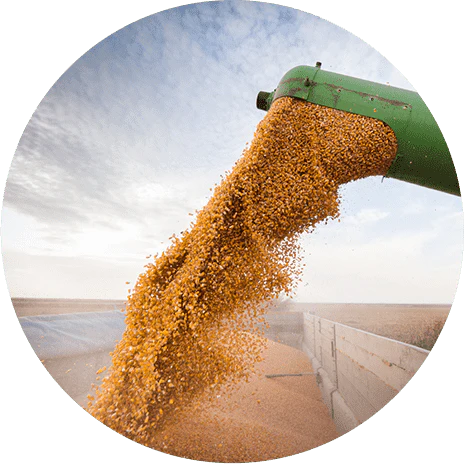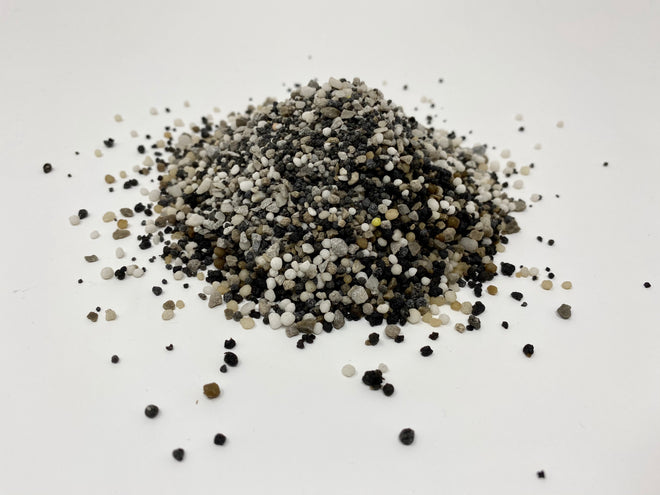
- When to plant:
- Spring, Fall
- Fertilizer:
- Hancock's 16-04-08 Lawn & Pasture Fertilizer
- Seeding rate:
- 50 - 100 lbs. per acre
- Overseeding rate:
- 50 lbs. per acre
- Seeding depth:
- 1/4 inch
- Ideal ph:
- 5.8 - 6.5
- Gmo:
- No
- Inoculant needed:
- No
- Coated or raw:
- Raw
- Lifecycle:
- Perennial
- Climate zones:
- Cool Season, Transition Zone
Hancock's Horse Pasture Grass Seed Central Climate Mix is designed for the unpredictable weather conditions of the transition zone. Our horse pasture seed mixtures provide close grazing adaptability as well as forage and hay production. Our horse pasture mixture is used for horses, alpacas, sheep, and other grazing animals.
Product Information
- Application or Use: Pasture, Cover Crop, Cattle Forage, Livestock Grazing, Groundcover, Erosion Control
- Germination Time: 7 - 28 days, under optimal conditions
- Growing Locations: Transition Zone, Cool Season
- Height: Pasture - 8 - 20 inches
- Sunlight Requirements: 8+ hours, full sun for best results
- Advantages: Endophyte free, designed for unpredictable weather.
- When to Plant: Recommended planting time is fall and spring when night time temperatures are consistently below 65 degrees.
Product Details
- Endophyte-Free
- Designed for the unpredictable weather conditions
- Provide close grazing adaptability, as well as forage and hay production
- Great for horses, alpacas, sheep, and other grazing animals
- Dual-purpose pasture advantage
Product Information
Hancock's Horse Pasture Grass Seed Central Climate Mix is designed for the unpredictable weather conditions of the transition zone. Horse pastures in the transition zone can be a real challenge for equestrians. This transition zone pasture grass seed mixture was selected to provide a dual-purpose pasture advantage. Our horse pasture seed mixtures provide close grazing adaptability as well as forage and hay production. Our horse pasture mixture is used for horses, alpacas, sheep, and other grazing animals.
Our mixture contains:
Orchardgrass
Perennial Ryegrass
Annual Ryegrass
Kentucky Bluegrass
Varieties may change due to availability.
*Product packaging may appear different than what is pictured.
Plant at 50 to 100 lbs. per acre.
Remove all old vegetation to prepare a clean seedbed by means of a disc. Drag area to loosen and level any hard or uneven spots if necessary. Apply a slow-release starter fertilizer at the recommended rate of 250 lbs. per acre. Fertilize three times a year for best results.
Broadcast seed at recommended rate. Drag or roll lightly to cover the seed no more than 1/4 in. below surface. If you are overseeding an existing area, it is pertinent to mow existing grass low and incorporate seed 1/4 in. into soil for best results. Apply irrigation for approximately 30 minutes each evening until soil is damp, and germination has occurred. Irrigate newly-seeded areas every other day until the sprout reaches 6 in., then water recommended three times a week if needed.
When choosing to start a new lawn, remove old vegetation by using a de-thatcher, power rake or tiller to kill the existing vegetation. Rake or drag the area to remove debris and dead grass for a clean area. Ensure the soil is leveled and loosened to allow the seed to have good soil contact once spread on a clean seed bed.
If you have an area with heavy weed coverage, we recommend starting fresh by killing and removing the existing vegetation. If you choose to use chemicals, herbicides or fertilizers, you must check with the product's manufacturer prior to planting new seed to ensure the proper waiting period.
When overseeding an existing area, mow your lawn at the lowest setting and bag the clippingsx. Rake or drag any areas that have dead thatch or debris.

Seed Quality
Hancock Seed is dedicated to delivering the best seeds possible to our customers. Hancock Seed grows and harvests many of our products, and we acquire the majority of the rest from other family farmers.
All these seeds are processed, packaged and shipped from Hancock Farm. This helps us ensure that our high standards are met. Unlike much of the competition, we refuse to sell you a seed that was not gathered during the last harvest. You will always receive fresh product from Hancock.
Every seed we grow comes with 40 years of experience behind it...you can rest assured that all of our products are cultivated in a method that assures its potential for growth.

Your cart ( 0 )

Hancock's Horse Pasture Grass Seed Central Climate Mix is designed for the unpredictable weather conditions of the transition zone. Our horse pasture seed mixtures provide close grazing adaptability as well as forage and hay production. Our horse pasture mixture is used for horses, alpacas, sheep, and other grazing animals.
Product Information
- Application or Use: Pasture, Cover Crop, Cattle Forage, Livestock Grazing, Groundcover, Erosion Control
- Germination Time: 7 - 28 days, under optimal conditions
- Growing Locations: Transition Zone, Cool Season
- Height: Pasture - 8 - 20 inches
- Sunlight Requirements: 8+ hours, full sun for best results
- Advantages: Endophyte free, designed for unpredictable weather.
- When to Plant: Recommended planting time is fall and spring when night time temperatures are consistently below 65 degrees.
Product Details
- Endophyte-Free
- Designed for the unpredictable weather conditions
- Provide close grazing adaptability, as well as forage and hay production
- Great for horses, alpacas, sheep, and other grazing animals
- Dual-purpose pasture advantage
Product Information
Hancock's Horse Pasture Grass Seed Central Climate Mix is designed for the unpredictable weather conditions of the transition zone. Horse pastures in the transition zone can be a real challenge for equestrians. This transition zone pasture grass seed mixture was selected to provide a dual-purpose pasture advantage. Our horse pasture seed mixtures provide close grazing adaptability as well as forage and hay production. Our horse pasture mixture is used for horses, alpacas, sheep, and other grazing animals.
Our mixture contains:
Orchardgrass
Perennial Ryegrass
Annual Ryegrass
Kentucky Bluegrass
Varieties may change due to availability.
*Product packaging may appear different than what is pictured.
Plant at 50 to 100 lbs. per acre.
Remove all old vegetation to prepare a clean seedbed by means of a disc. Drag area to loosen and level any hard or uneven spots if necessary. Apply a slow-release starter fertilizer at the recommended rate of 250 lbs. per acre. Fertilize three times a year for best results.
Broadcast seed at recommended rate. Drag or roll lightly to cover the seed no more than 1/4 in. below surface. If you are overseeding an existing area, it is pertinent to mow existing grass low and incorporate seed 1/4 in. into soil for best results. Apply irrigation for approximately 30 minutes each evening until soil is damp, and germination has occurred. Irrigate newly-seeded areas every other day until the sprout reaches 6 in., then water recommended three times a week if needed.
Instructions
When choosing to start a new lawn, remove old vegetation by using a de-thatcher, power rake or tiller to kill the existing vegetation. Rake or drag the area to remove debris and dead grass for a clean area. Ensure the soil is leveled and loosened to allow the seed to have good soil contact once spread on a clean seed bed.
If you have an area with heavy weed coverage, we recommend starting fresh by killing and removing the existing vegetation. If you choose to use chemicals, herbicides or fertilizers, you must check with the product's manufacturer prior to planting new seed to ensure the proper waiting period.
When overseeding an existing area, mow your lawn at the lowest setting and bag the clippingsx. Rake or drag any areas that have dead thatch or debris.

















